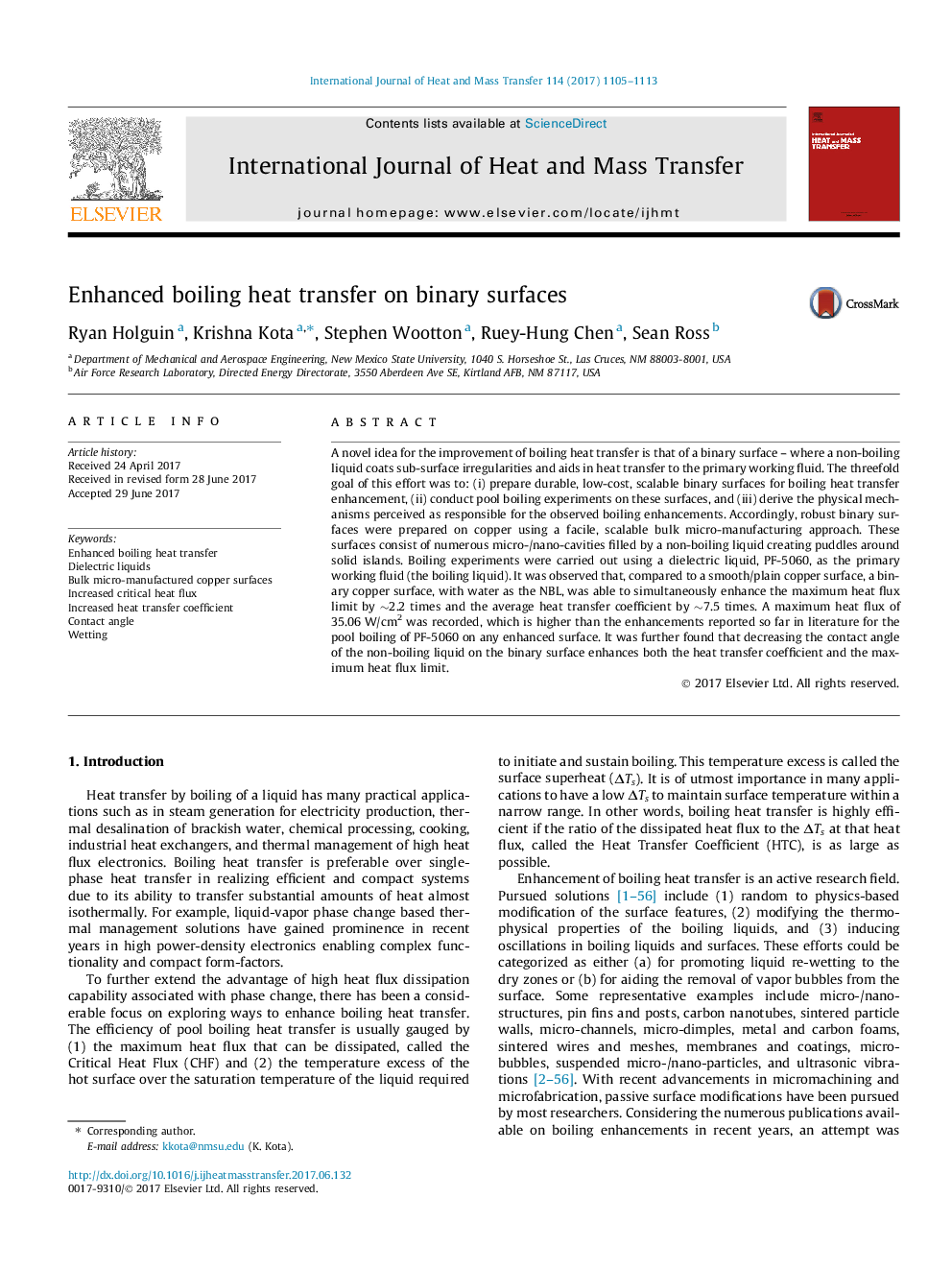| Article ID | Journal | Published Year | Pages | File Type |
|---|---|---|---|---|
| 4993935 | International Journal of Heat and Mass Transfer | 2017 | 9 Pages |
Abstract
A novel idea for the improvement of boiling heat transfer is that of a binary surface - where a non-boiling liquid coats sub-surface irregularities and aids in heat transfer to the primary working fluid. The threefold goal of this effort was to: (i) prepare durable, low-cost, scalable binary surfaces for boiling heat transfer enhancement, (ii) conduct pool boiling experiments on these surfaces, and (iii) derive the physical mechanisms perceived as responsible for the observed boiling enhancements. Accordingly, robust binary surfaces were prepared on copper using a facile, scalable bulk micro-manufacturing approach. These surfaces consist of numerous micro-/nano-cavities filled by a non-boiling liquid creating puddles around solid islands. Boiling experiments were carried out using a dielectric liquid, PF-5060, as the primary working fluid (the boiling liquid). It was observed that, compared to a smooth/plain copper surface, a binary copper surface, with water as the NBL, was able to simultaneously enhance the maximum heat flux limit by â¼2.2 times and the average heat transfer coefficient by â¼7.5 times. A maximum heat flux of 35.06Â W/cm2 was recorded, which is higher than the enhancements reported so far in literature for the pool boiling of PF-5060 on any enhanced surface. It was further found that decreasing the contact angle of the non-boiling liquid on the binary surface enhances both the heat transfer coefficient and the maximum heat flux limit.
Related Topics
Physical Sciences and Engineering
Chemical Engineering
Fluid Flow and Transfer Processes
Authors
Ryan Holguin, Krishna Kota, Stephen Wootton, Ruey-Hung Chen, Sean Ross,
